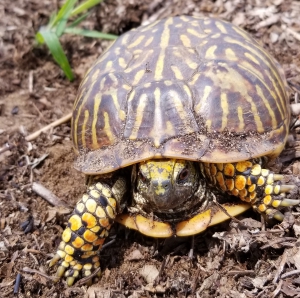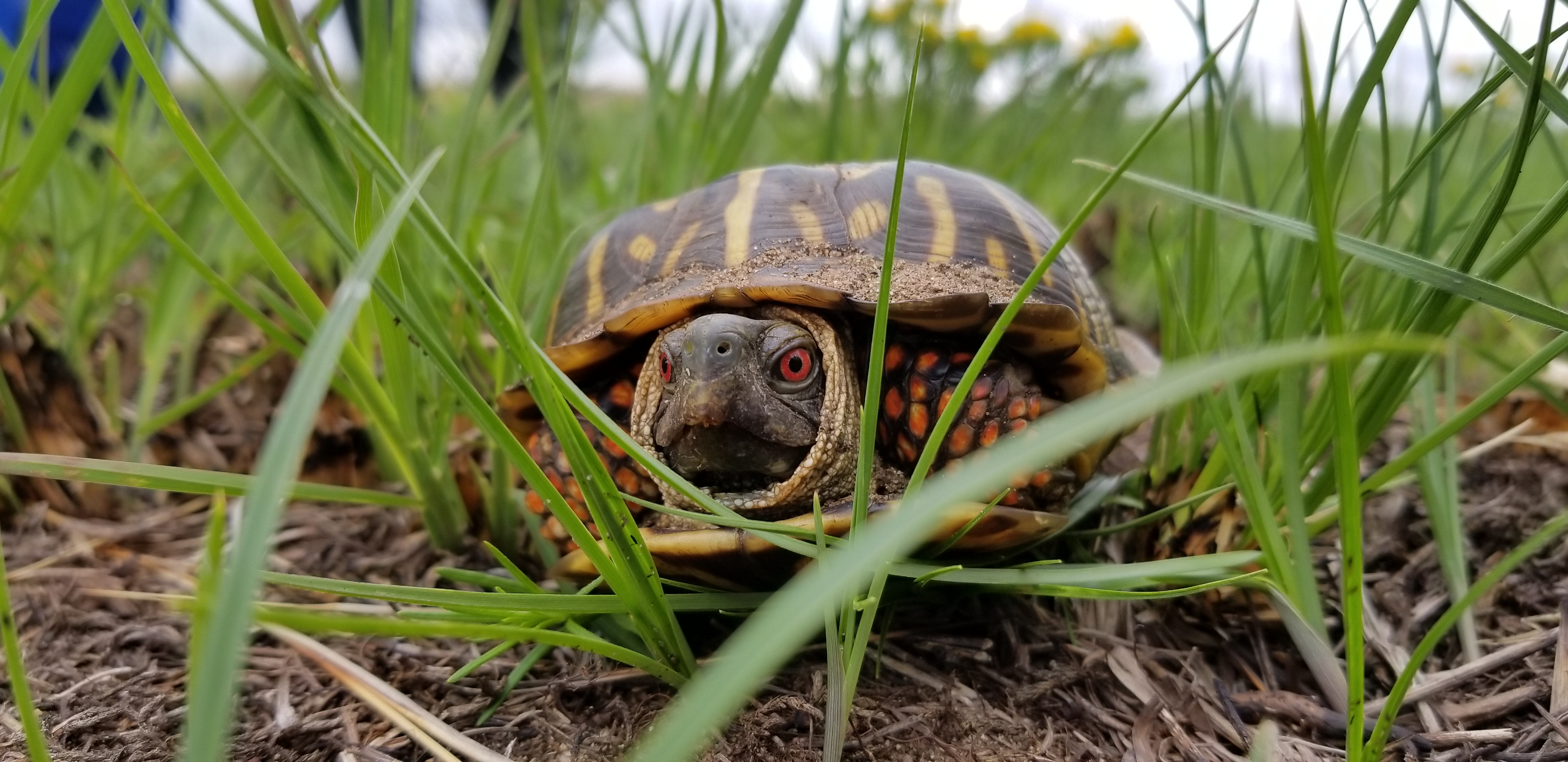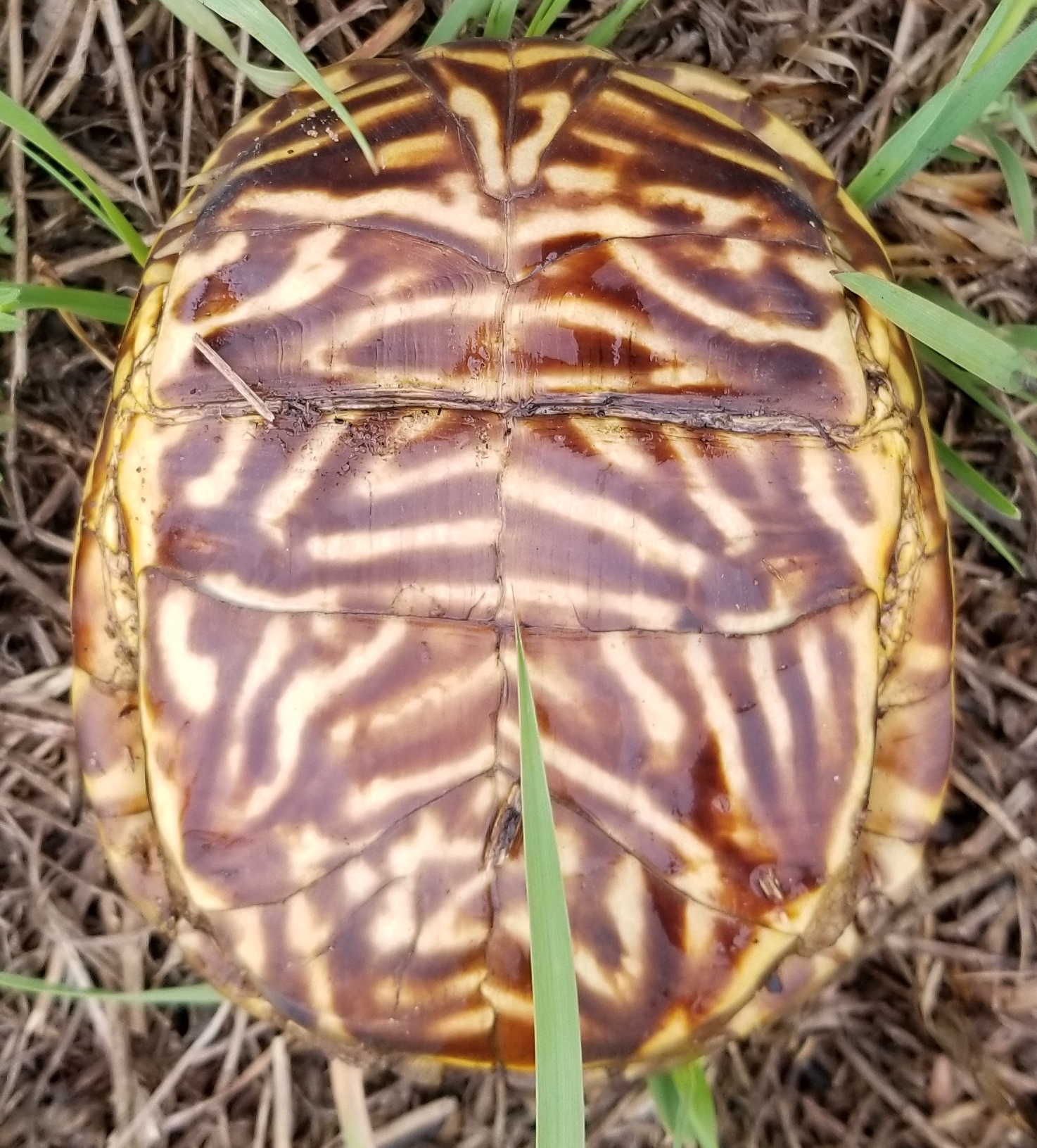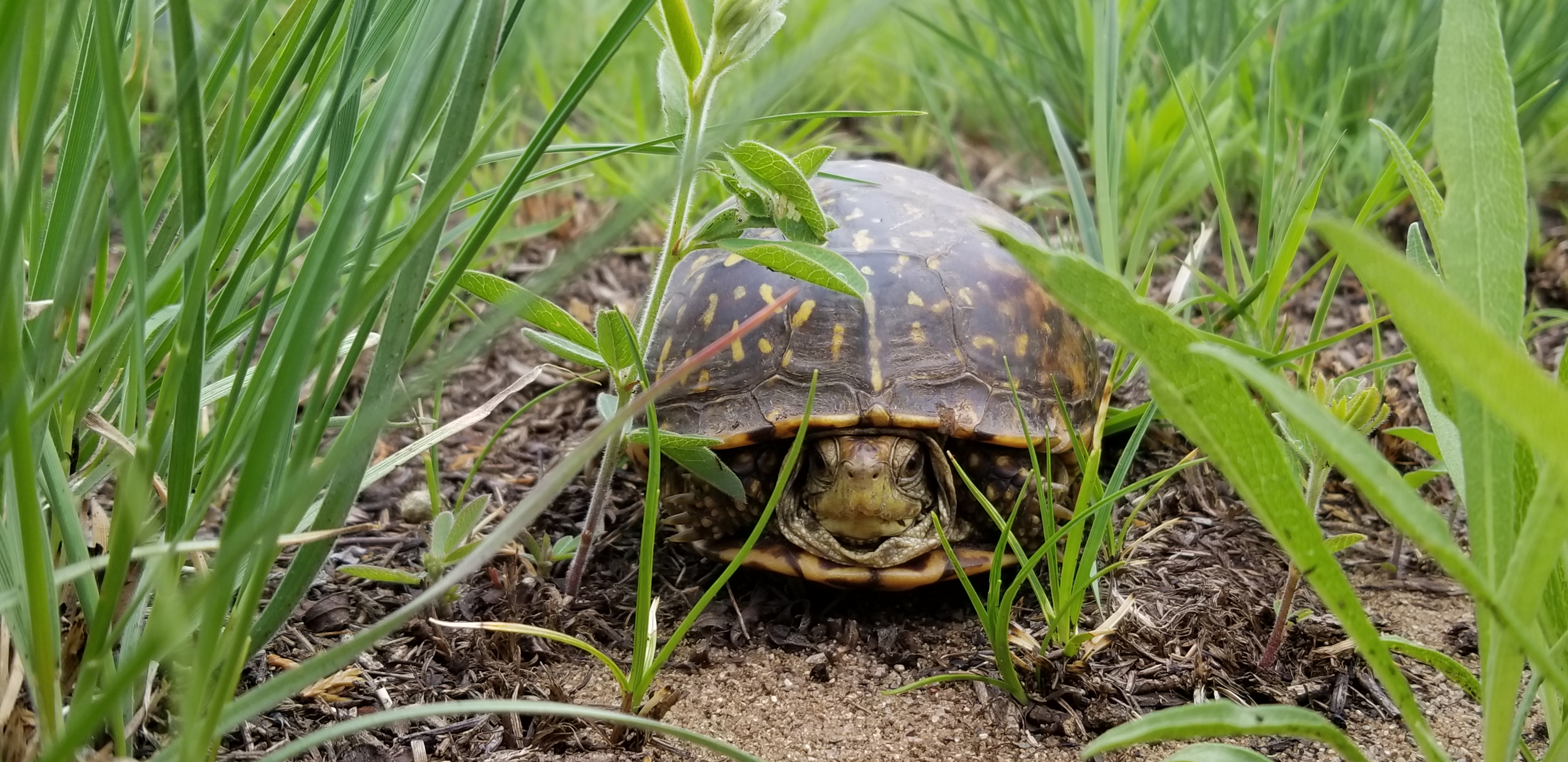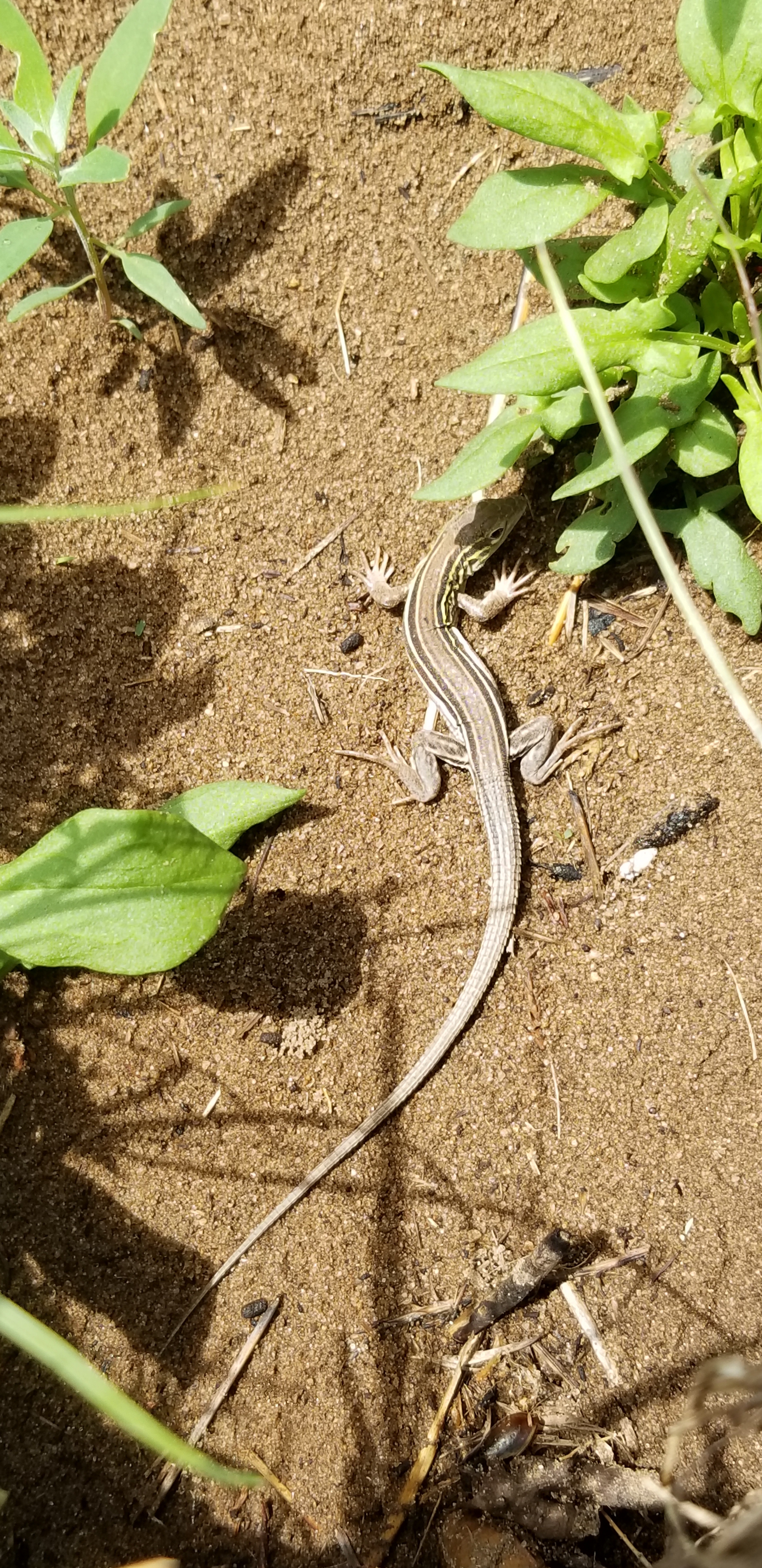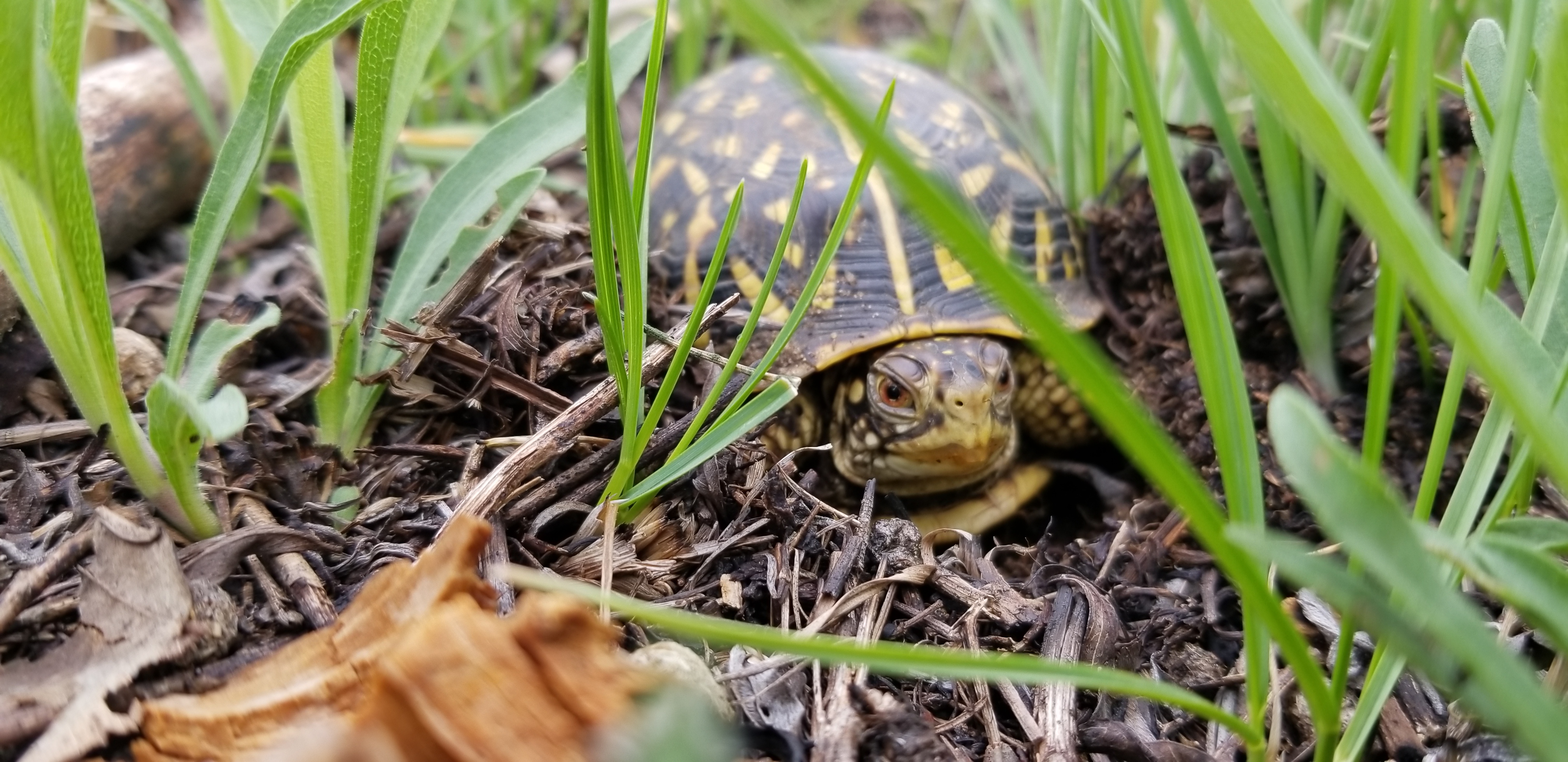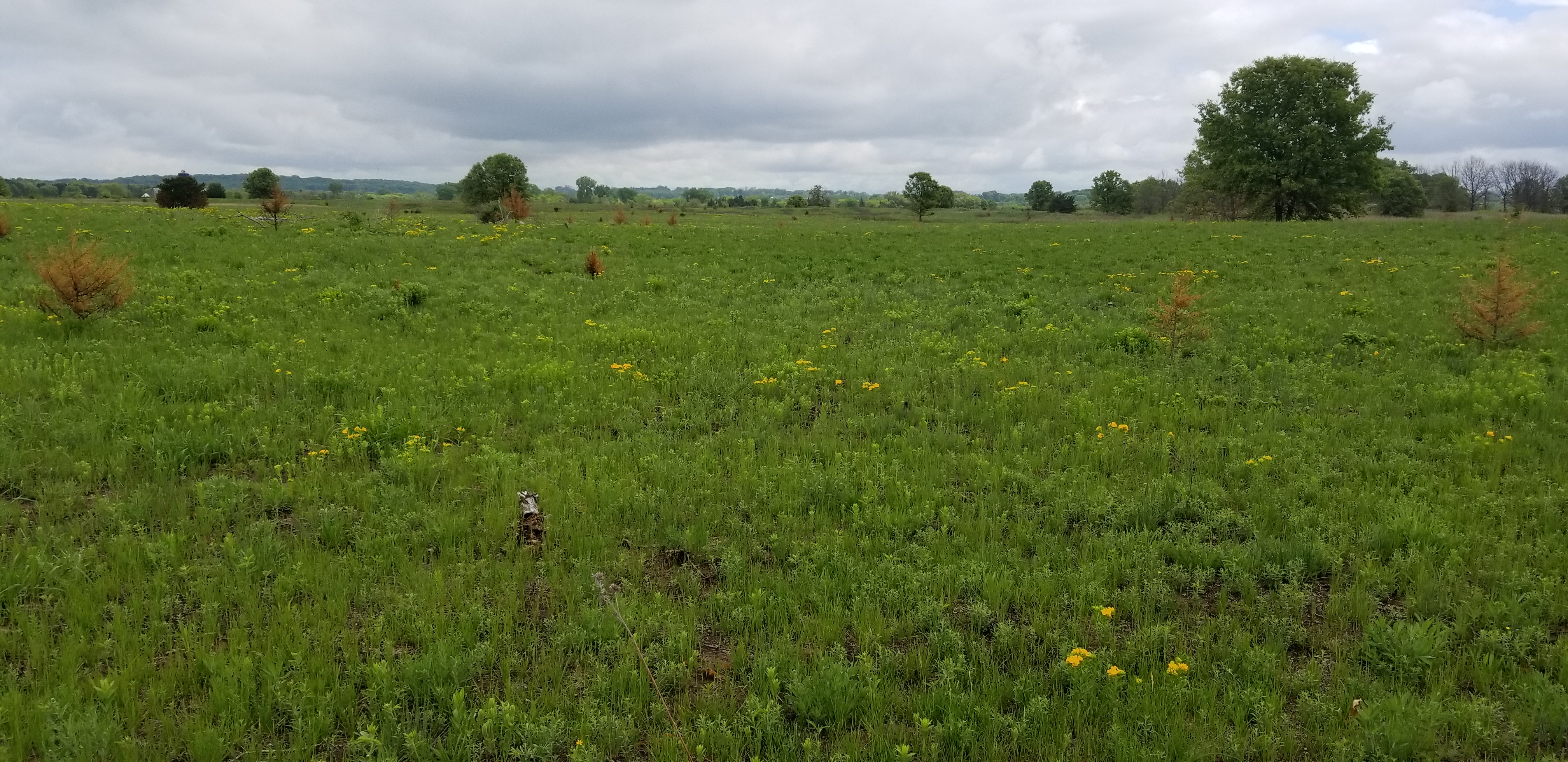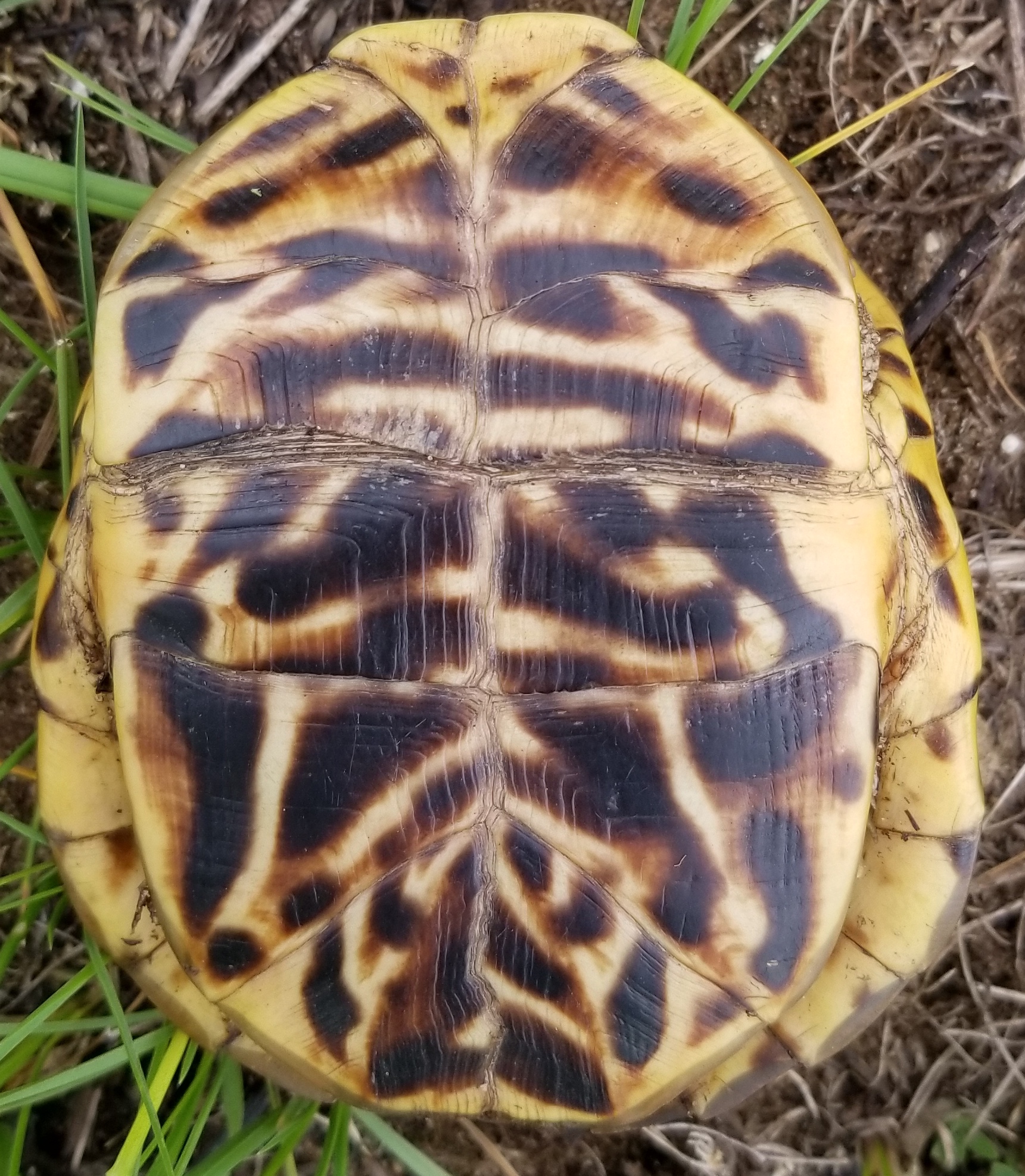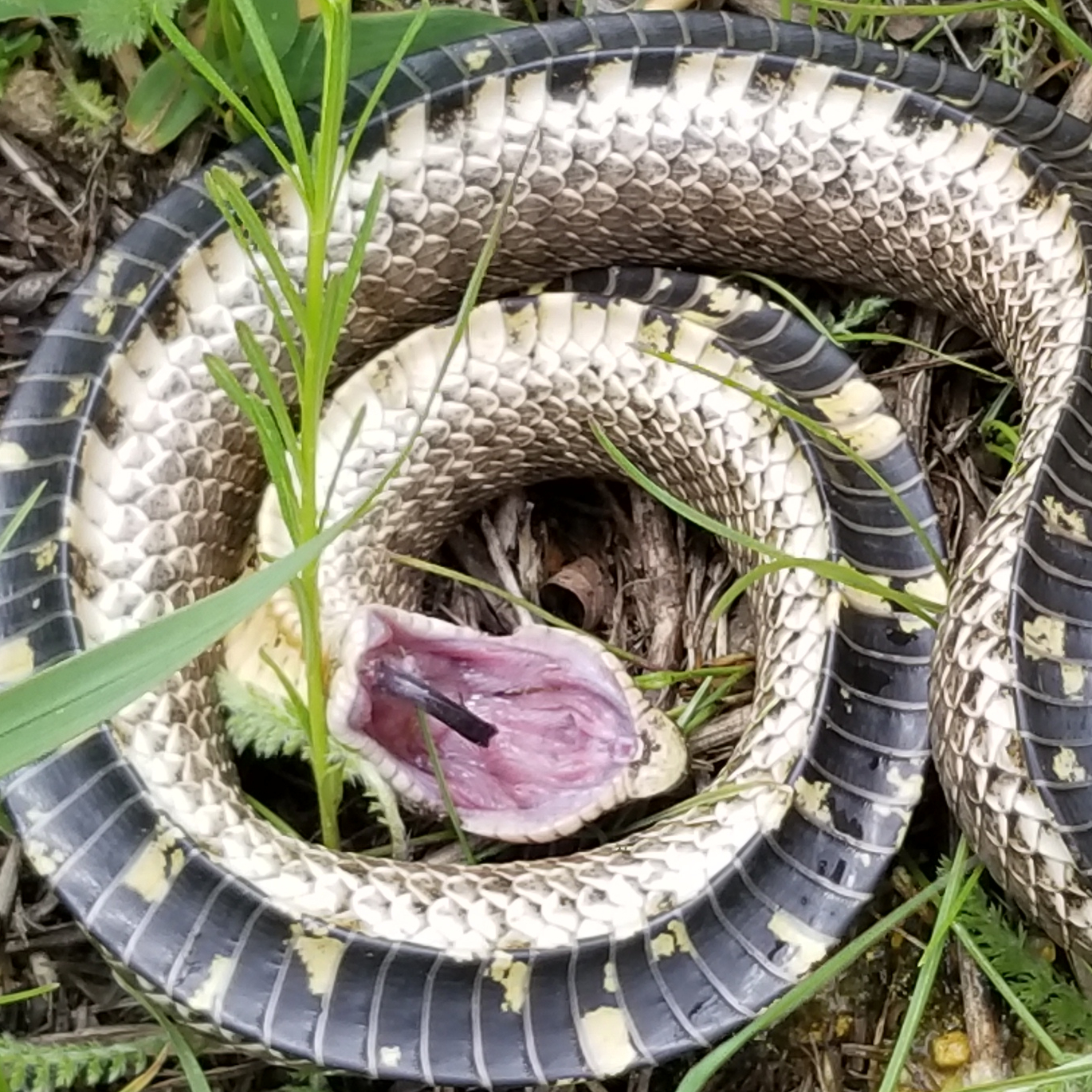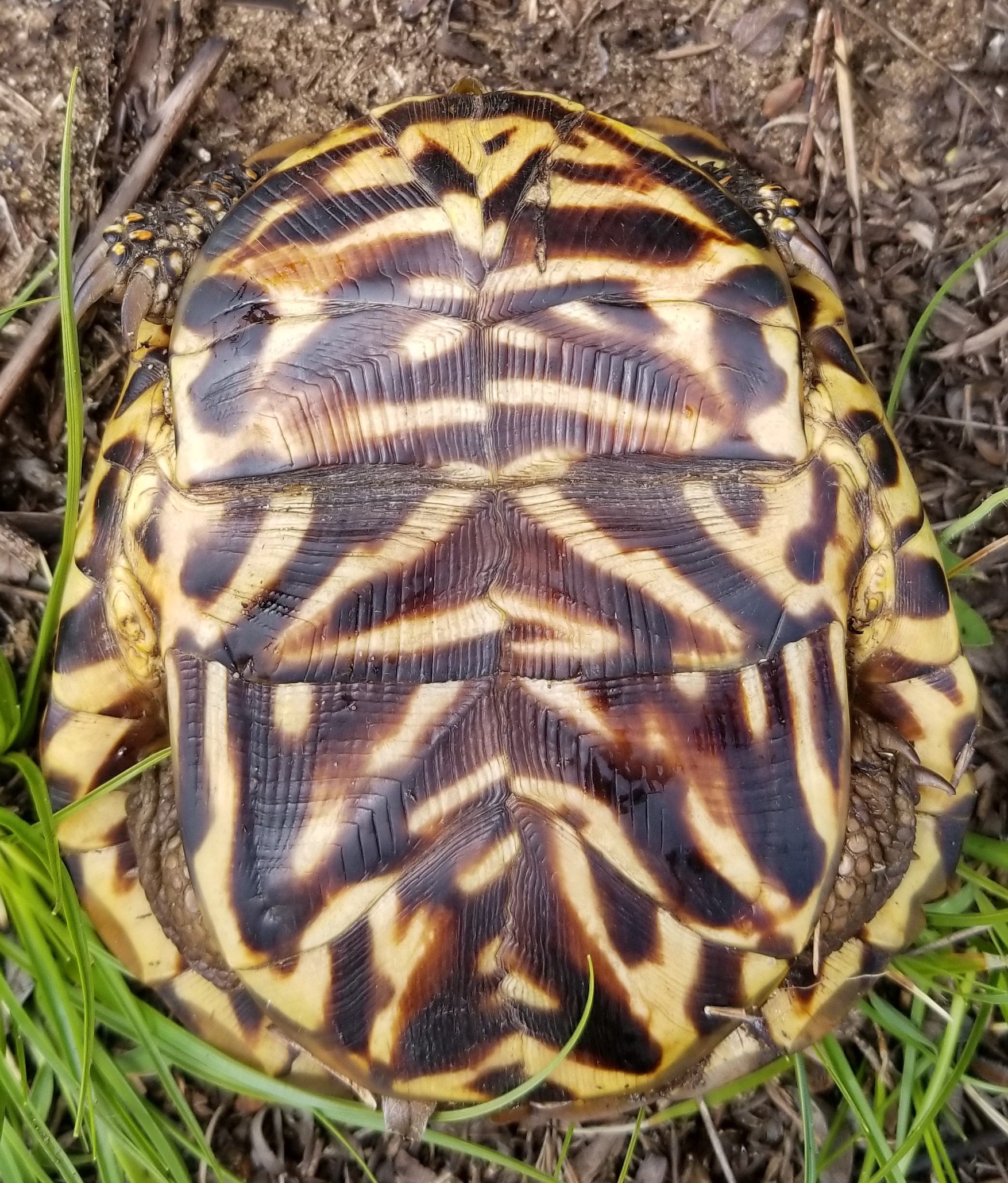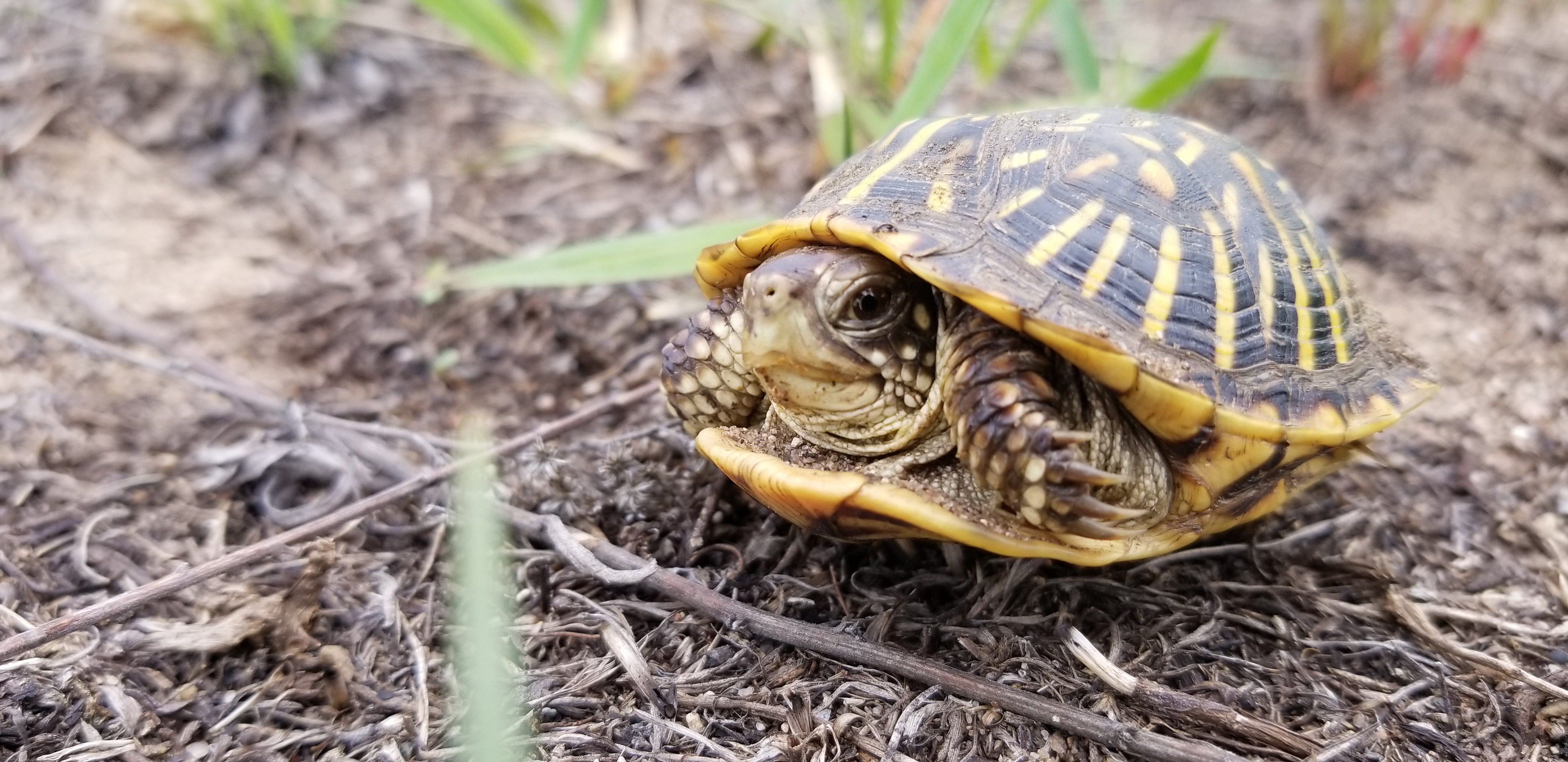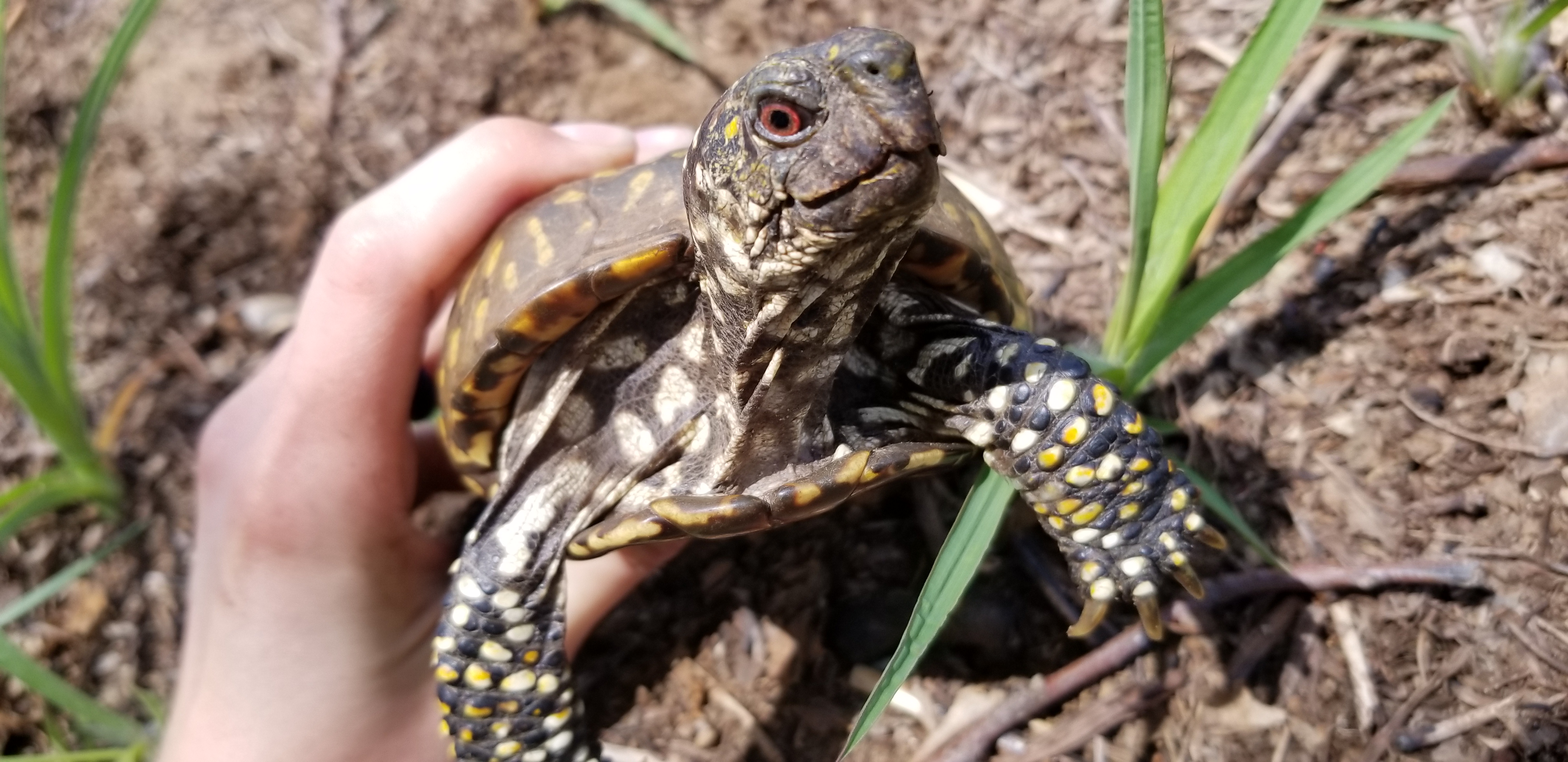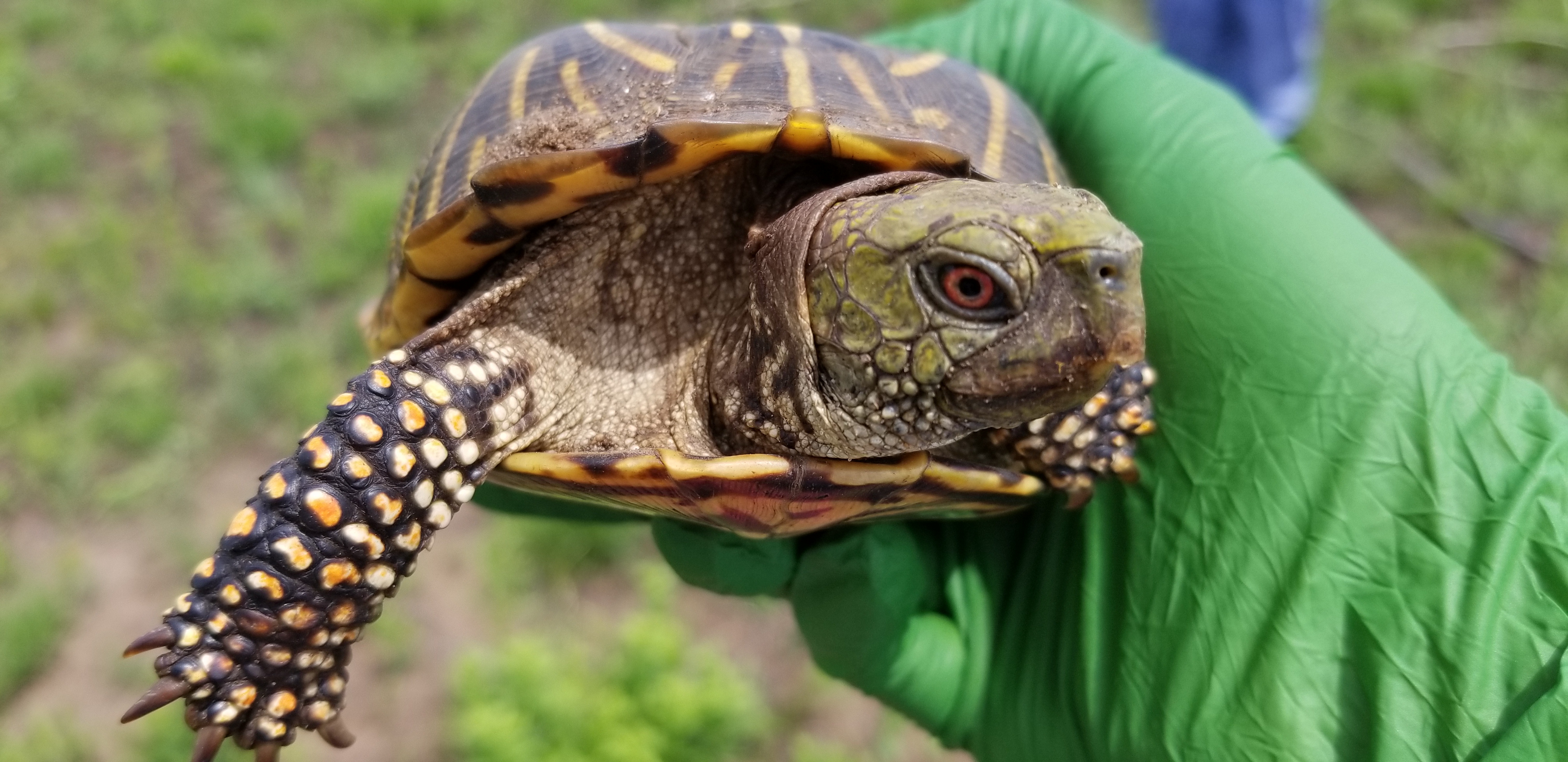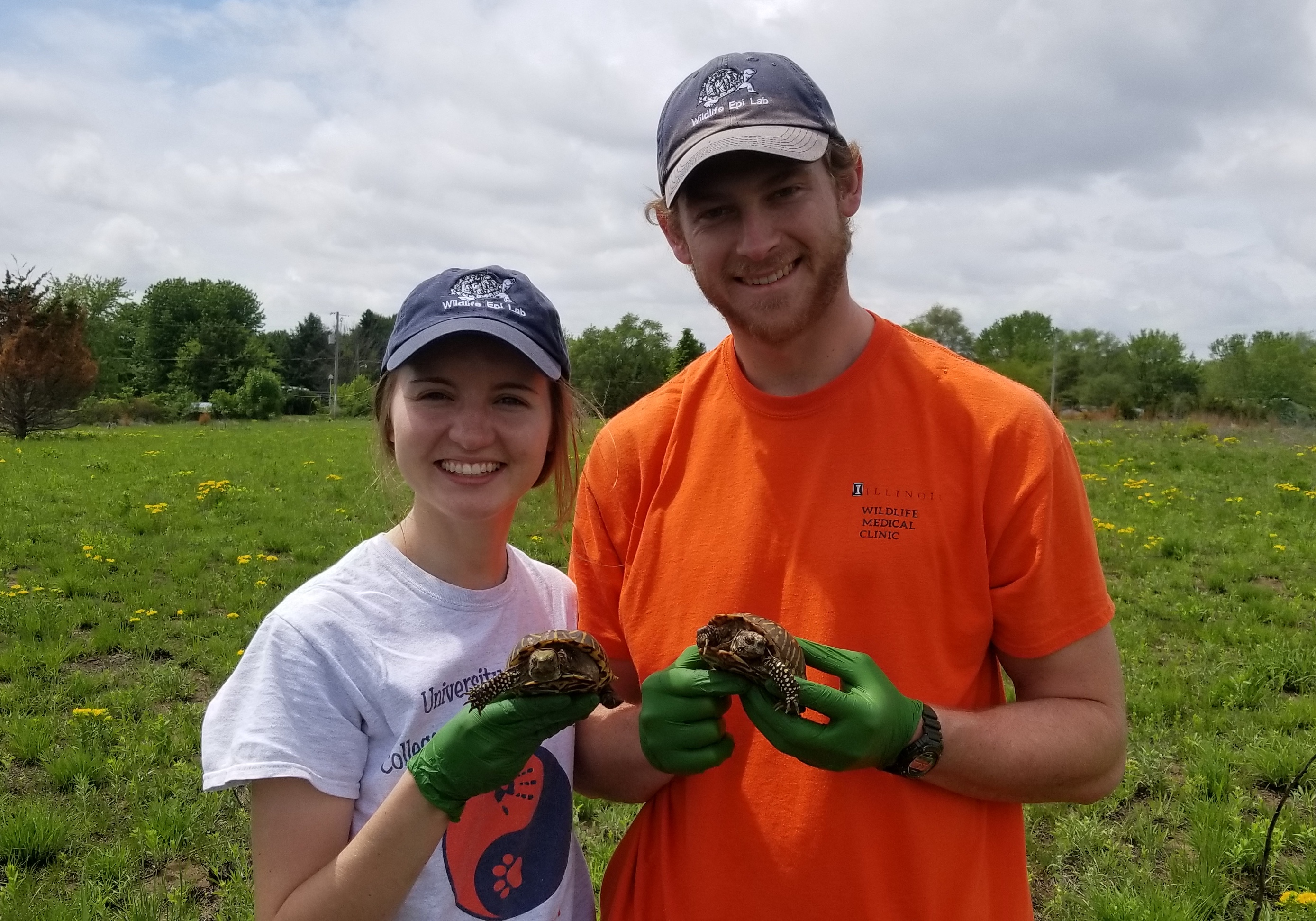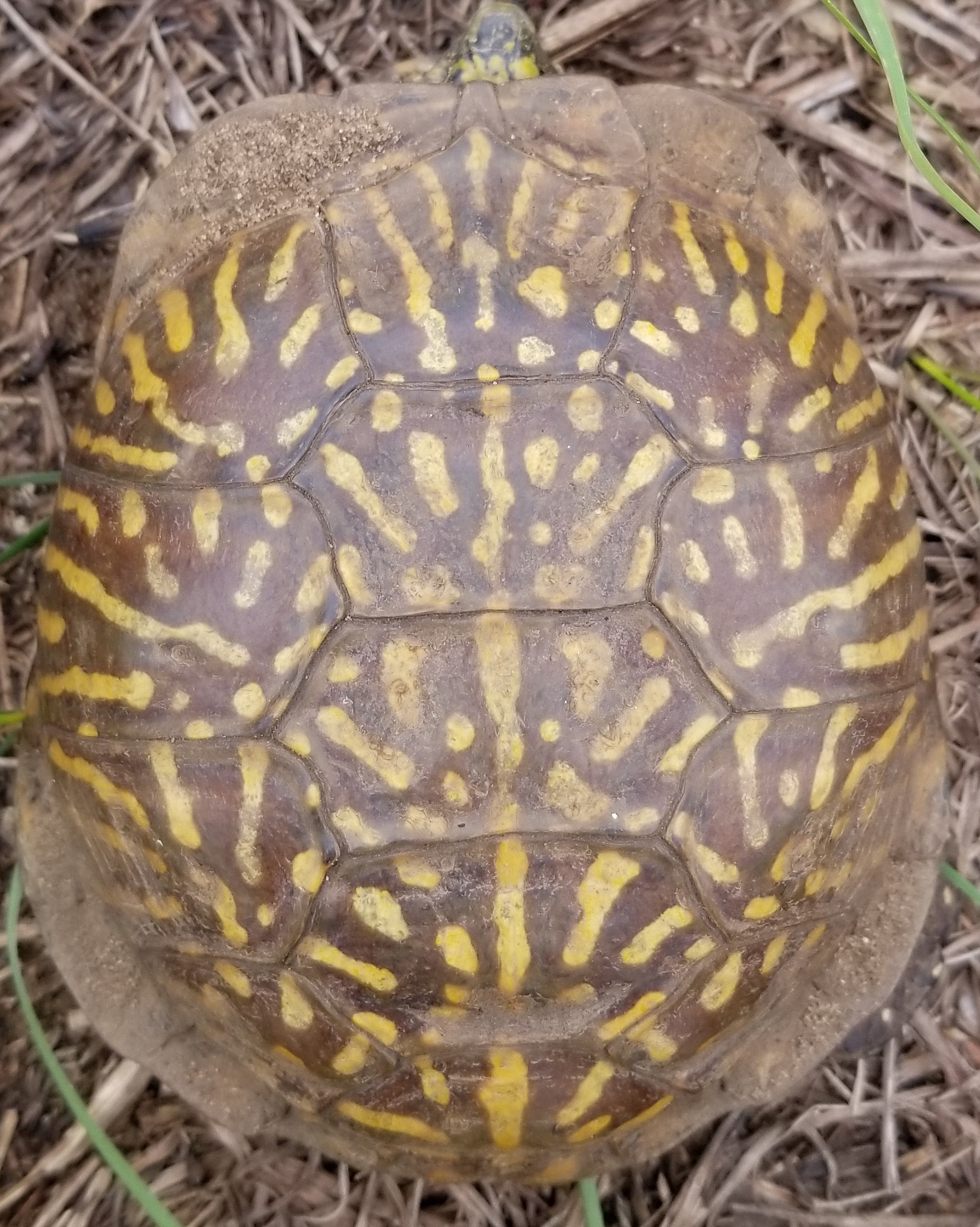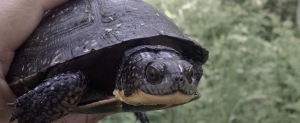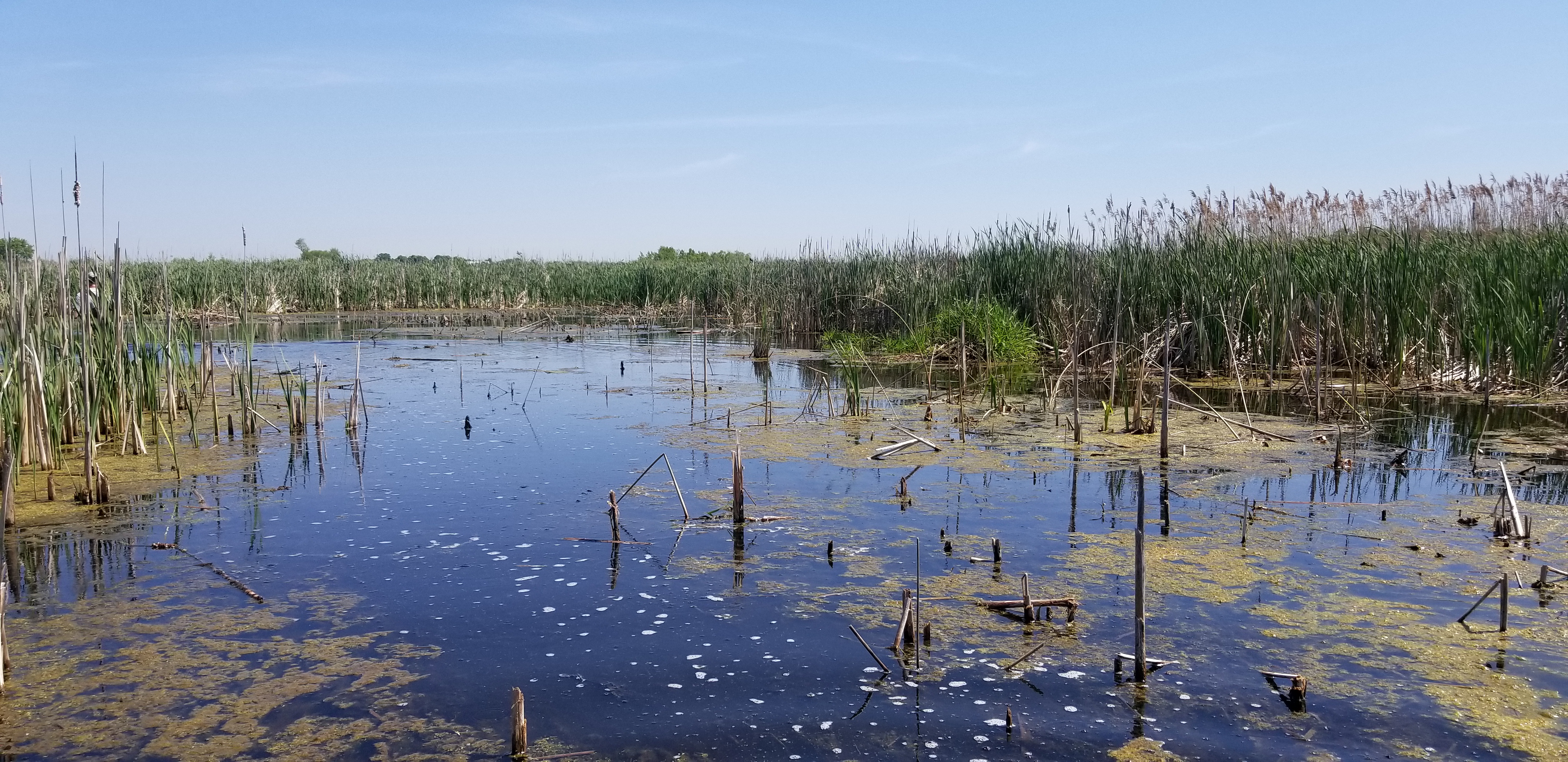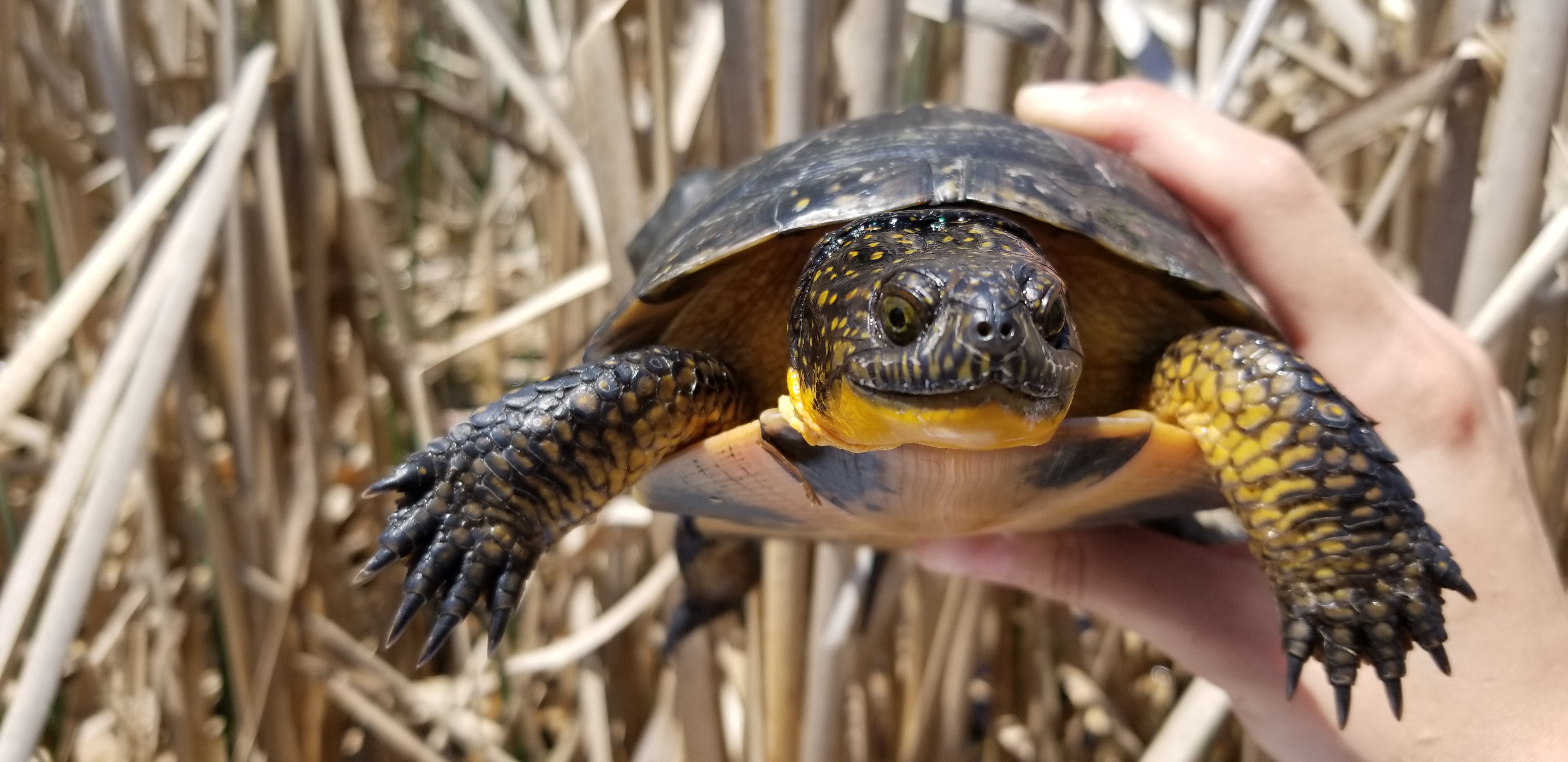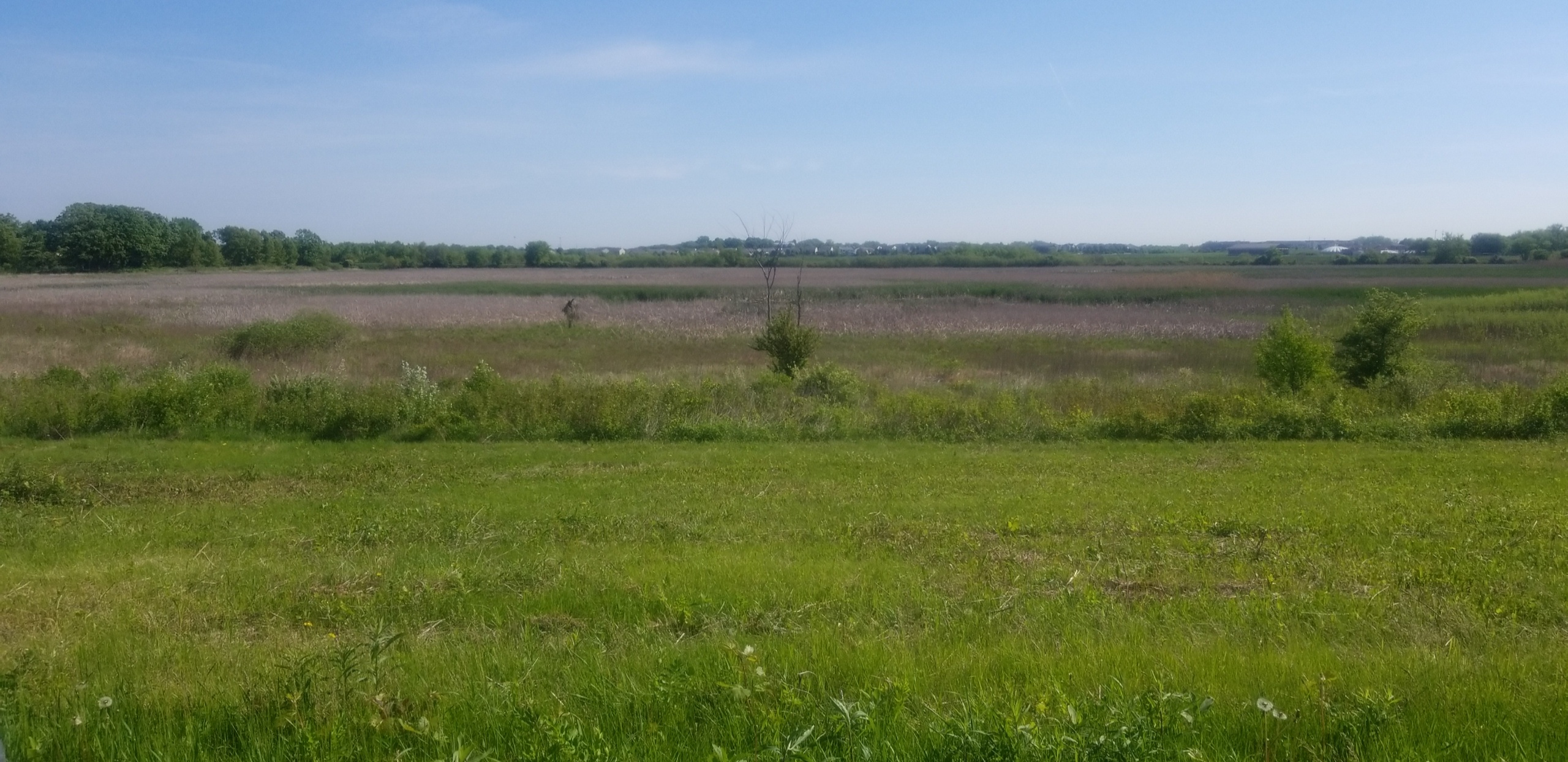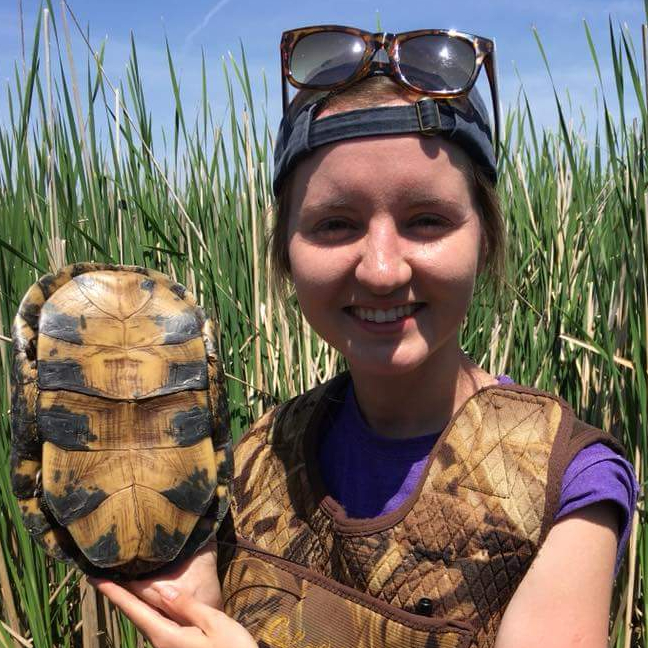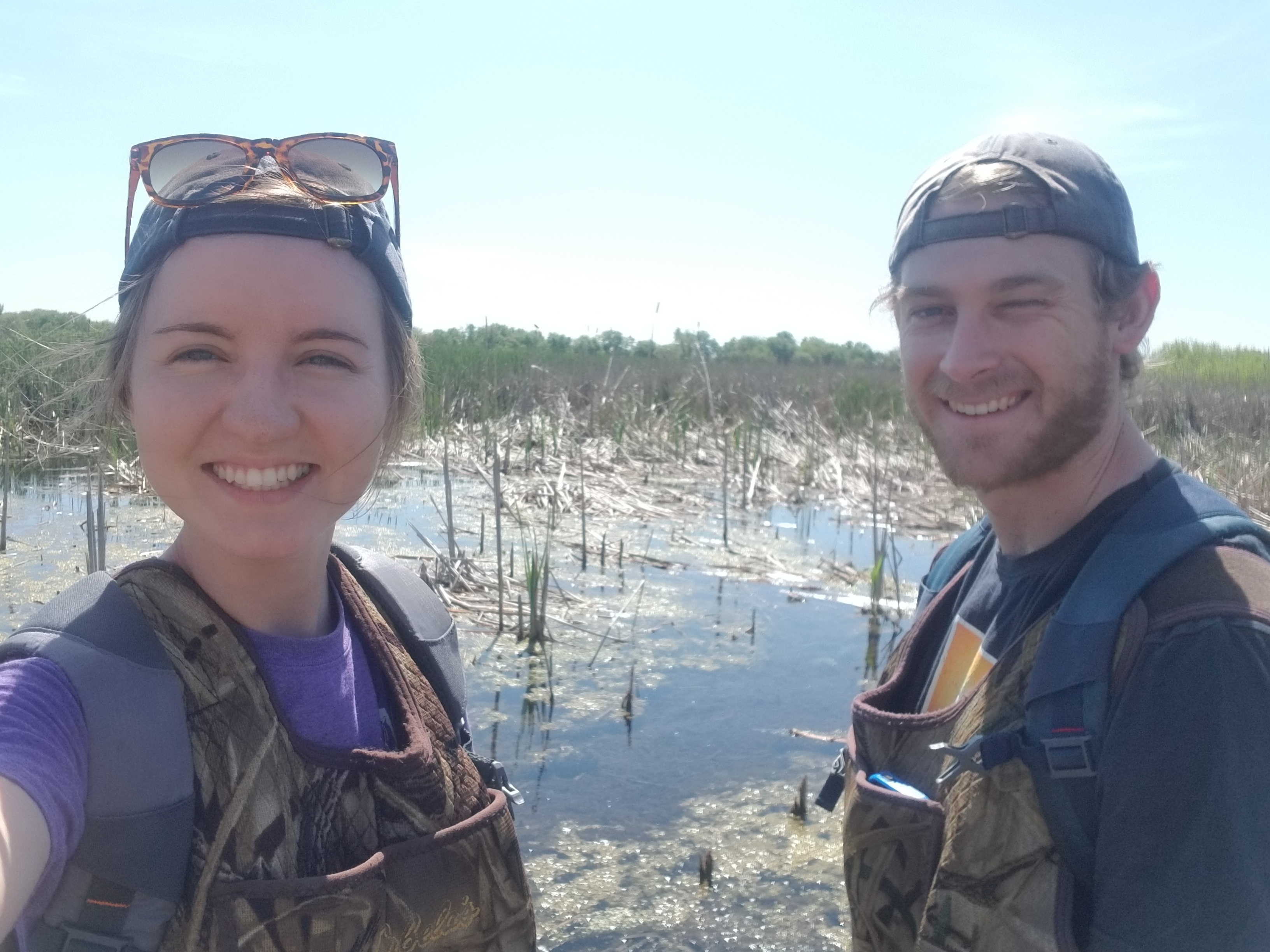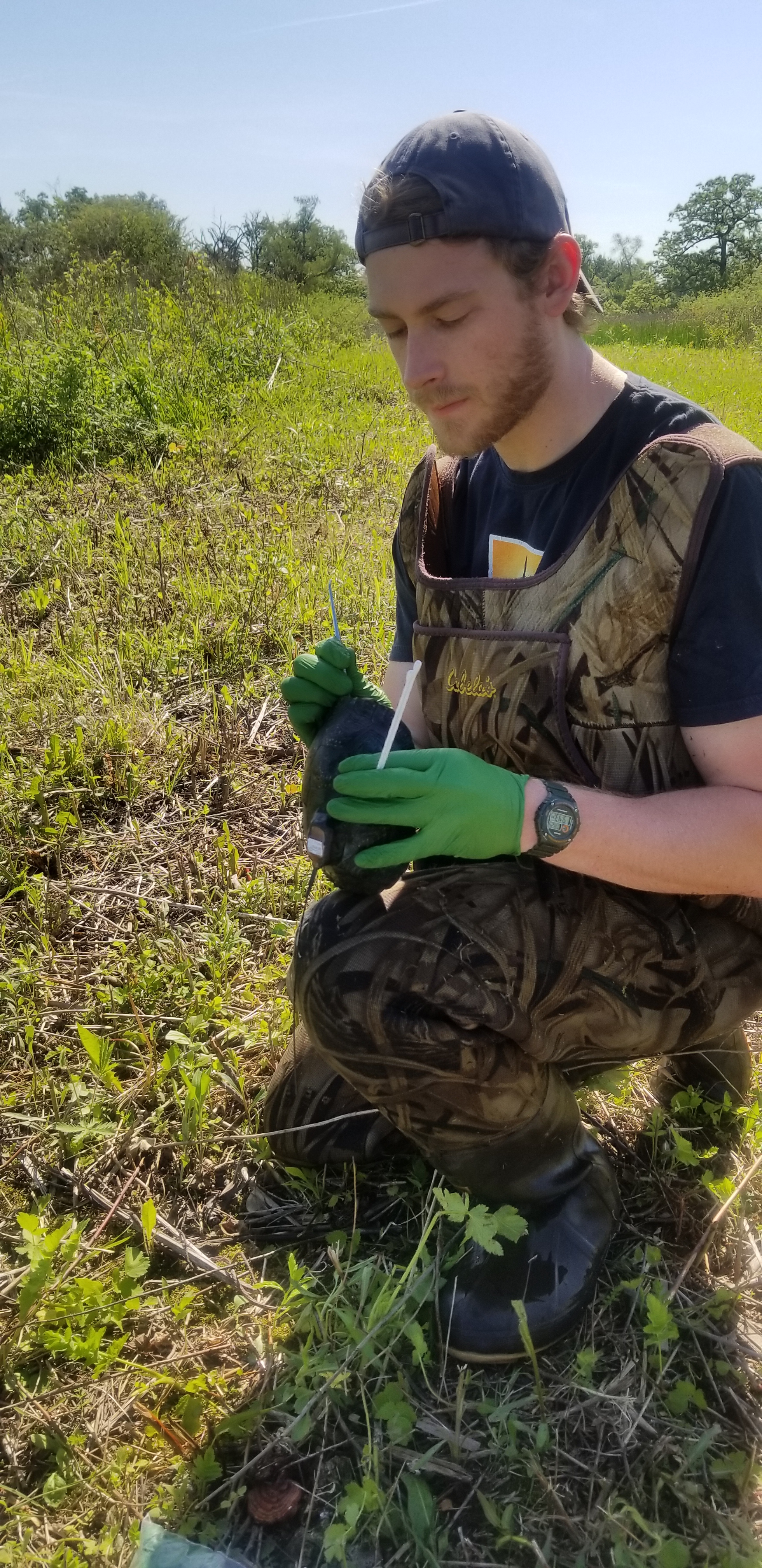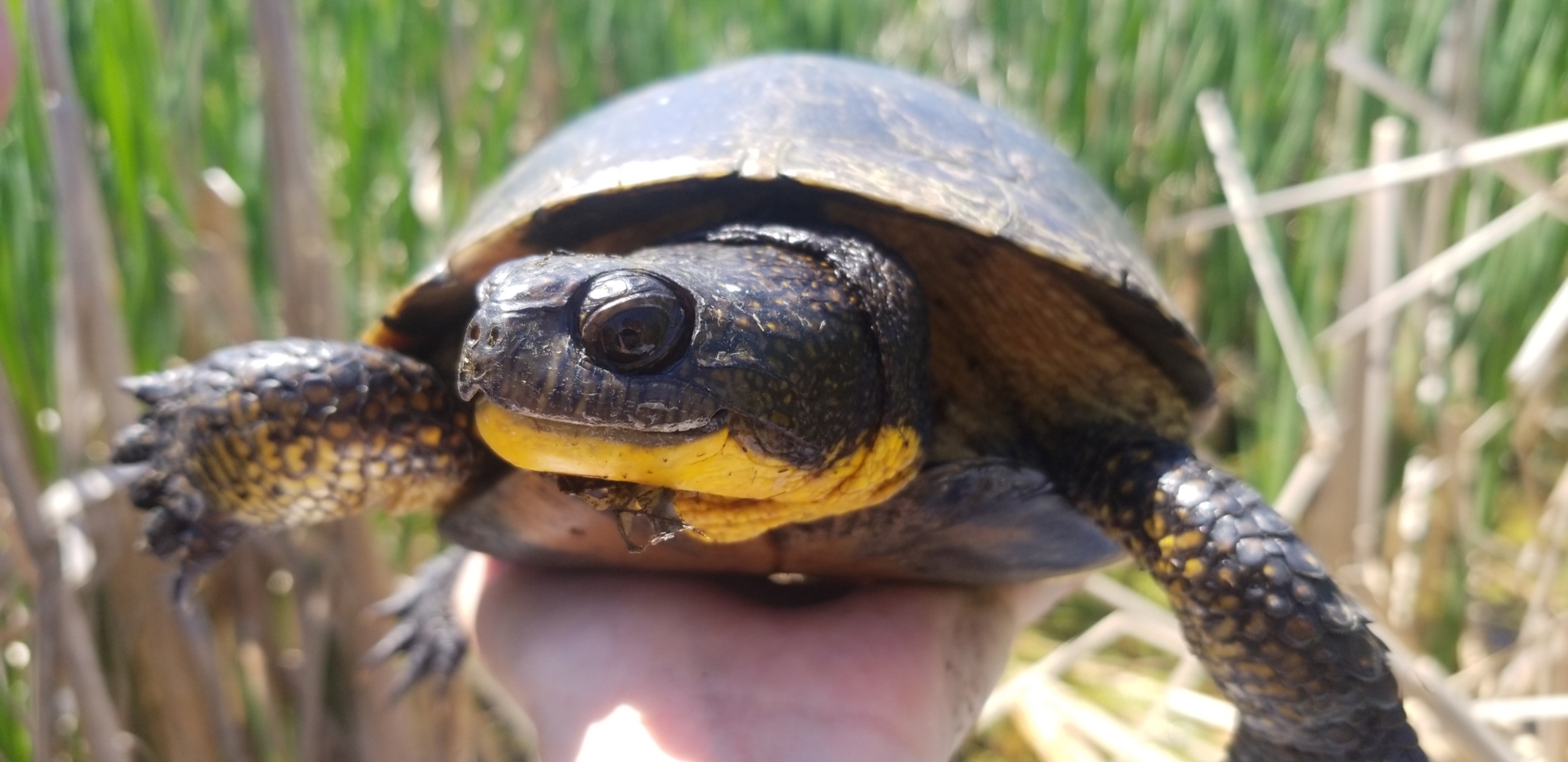Our second week turned out to be a whirlwind tour through several Illinois counties and turtle species! We were lucky enough to sample ornate box turtles and Blanding’s turtles within a few days! We missed our large crew of fellow veterinary students that we sampled eastern box turtles with last week but got to reconnect with our Blanding’s crew lab mates Lauren and Kirsten up in Lake County!
The week began with some much needed catch up on data entry from last week. With 79 turtles sampled in our first week, there was a lot of datasheets to sort through and add to our master database. But with that taken care of, we packed and were off for more turtles! Ornate box turtles were the first stop on our tour. The samples we collected from them were the finishing touches on an innate immunity study being conducted by Dr. Laura Adamovicz. Innate immunity is a first-line defence mechanism including skin barriers, cytokines to activate immune cells, and the immune cells like neutrophils that perform the broad function of battling any foreign bacteria the animal encounters. Dr. Adamovicz is looking at the strength of the innate immune response between the different species we study as a lab. Collecting these samples came with an interesting twist for us however as we had no turtle dogs to search for us! Using just our keen eyes we were able to spot 20 ornate box turtles in one day of hiking along with two hognose snakes, a six lined race runner lizard, and plenty of interesting bugs! We learned that hognose snakes have an interesting defense mechanism of playing dead when provoked by a predator. Urging us along was a competition between us to spot the most turtles with a cold beer as first place prize. Marta, with 5 years of experience searching for box turtles, was able to come out on top!
After our ornate adventures, we headed over to Northern Illinois to be part of an initial health sampling of their Blanding’s turtles! Using our Blanding’s knowledge from last summer, Marta and I, with the skilled telemetry tracking of the biologists, were able to sample 15 Blanding’s turtles in 2 days including blood values and swabbing the mouth and cloaca for pathogens. This pathogen data will help inform the biologists of disease prevalence in various areas around the county and give them a more complete picture of the health status of their turtles. For future efforts in conserving this endangered species, they will be able to have a better idea of how to help the populations they study based on the turtle health and the health of the environment in which they live. We got to meet their biggest Blanding’s, the largest we had ever seen, named “Helmet”! It felt good being back in waders again and storming through reeds to find our smiling turtle friends!

